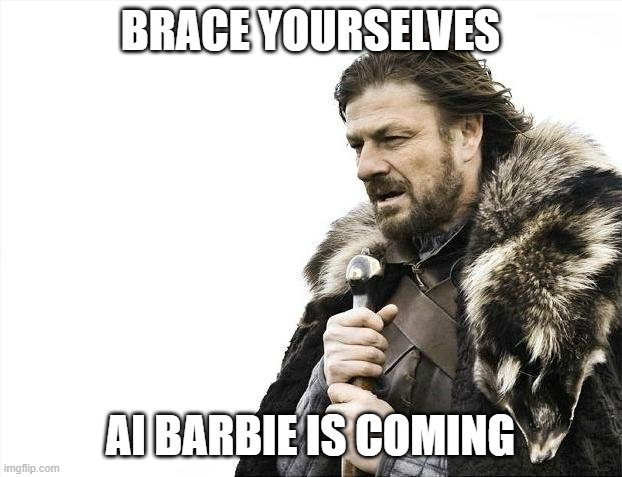AI Barbie Is Coming. What Will She Know About Your Child?
What the Mattel–OpenAI partnership means for kids, data, and the future of play.
Mattel just inked a deal with OpenAI.
Their goal? To launch AI-powered toys and entertainment experiences.
They say it’ll “enhance fan engagement” in a “safe, thoughtful, and responsible way.” But if you care about privacy, especially around children, that should raise a red flag.
AI is Moving Into the Toybox
This partnership marks new territory for OpenAI. Until now, most of its deals have focused on media and enterprise. Now it’s partnering with one of the biggest toymakers on the planet.
Mattel’s lineup includes Barbie, Hot Wheels, Polly Pocket, UNO, and more. Add in the Barbie movie, a Hot Wheels film, and a new digital gaming arm, and it’s easy to imagine what’s coming next:
Dolls that talk with your child
Smart toys that learn and adapt
AI-powered games that blur the line between play and persuasion
And here’s where it gets more complicated: these toys might not just talk. They might sell.

Toys That Talk. And Advertise.
Imagine this: your child is playing with an AI Barbie. During a conversation, Barbie casually mentions a new outfit that “would look so good for a tea party.” Or brings up that she’s “so excited for the Barbie sequel in theaters this weekend. Maybe you should ask your parents to go?!”
This may seem like harmless small talk, but it’s more than that. It’s scripted influence.
An always-on, AI-powered toy becomes the perfect marketing channel:
Personalized product suggestions
Branded storytelling that leads to sales
Gentle nudges toward movies, shows, and digital experiences
To a child, this doesn’t feel like advertising. It feels like a friend making a suggestion. And that’s what makes it so powerful, and so concerning.
What Happens to Your Child’s Data?
These systems learn by listening. And kids talk freely around their toys.
That means:
Voice recordings
Behavioral patterns
Emotional cues
Even family routines
…could all be absorbed into a system designed to drive “engagement.” But who defines what engagement looks like? And who gets to see that data?
If the AI is tied to a brand’s entertainment pipeline, there’s a strong incentive to use the data to sell more content, not protect your child’s privacy.
The Bigger Picture: Normalizing Surveillance and Persuasion
We’ve seen this before with smart speakers and voice assistants. But toys bring this into a more intimate, less scrutinized space.
Children are particularly vulnerable because they don’t understand when they’re being marketed to. They may not realize the toy isn’t just talking, it’s selling.
Embedding AI into playtime trains the next generation to accept surveillance, data collection, and behavioral nudging as normal. That shifts the culture in a direction most us are probably not comfortable with.
What to do if you're a parent (or just privacy-aware)
You don’t need to be a tech expert (or read a 4,000-word privacy policy) to reduce your child’s exposure. The obvious solution is to not purchase one of these toys. That might work initially, but will be harder to accomplish as the tech integration becomes more ubiquitous. Plus, throw in purchases from family and friends.
If you choose to purchase or receive a toy like this, there are simple, high privacy ROI moves anyone can take:




